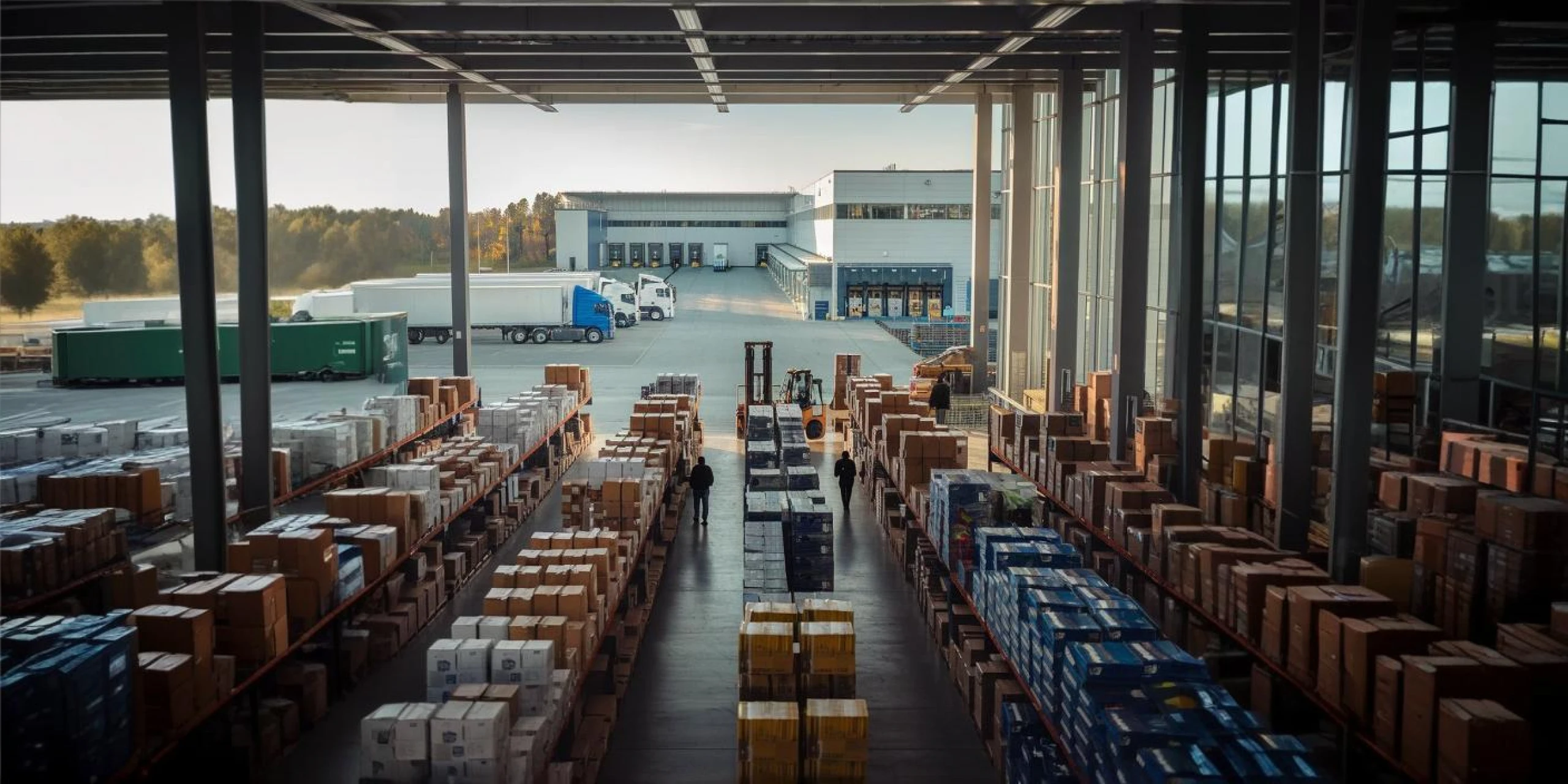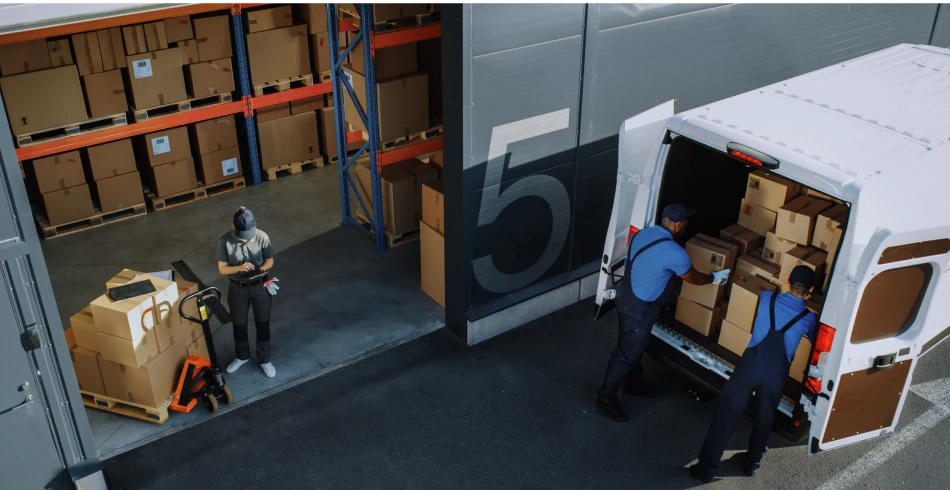Inbound and Outbound Logistics

Inbound and outbound logistics are integral components of the supply chain, ensuring the smooth flow of goods, from procurement to delivery. Their efficient coordination directly impacts costs, operational efficiency, and customer satisfaction.
How Are Inbound and Outbound Logistics Distinct
Inbound Logistics: focuses on the flow of materials and goods from suppliers to warehouses or production facilities. It includes tasks like transportation, receiving, storage, and inventory management. By streamlining inbound logistics, businesses can ensure timely availability of raw materials and avoid disruptions in production or order fulfilment. Efficient inbound logistics also enhances supplier relationships, leading to better coordination and reliability.
Outbound Logistics: It handles the movement of finished goods from warehouses to customers, retailers, or distribution centres. It includes packaging, order processing, and transportation. The effectiveness of outbound logistics directly impacts customer satisfaction, since timely and accurate deliveries are critical for maintaining trust and loyalty. Moreover, a well-managed outbound logistics process reduces transportation costs and enables scalability as businesses grow.
| Aspect | Inbound Logistics | Outbound Logistics |
|---|---|---|
| Objective of Both | To ensure the uninterrupted availability of materials while minimising costs like procurement, transportation, and inventory holding. | To meet customer expectations by ensuring timely delivery and maintaining product quality, which enhances customer satisfaction and loyalty. |
| Key Activities of Inbound Logistics | Procurement: Involves selecting suppliers, negotiating terms (price, delivery schedules, and payment), and placing orders to acquire materials. Transportation: Goods are moved from suppliers to the company’s facility using selected transport modes (road, rail, air, sea) that balance cost and efficiency. Receiving: Once materials arrive, they are unloaded, inspected for quality and accuracy, and documented to ensure they meet purchase order specifications. Storage: Materials are organised in warehouses to maintain stock levels efficiently. Inventory systems track these materials to ensure availability when needed. Inventory Control: Maintaining adequate stock levels without overstocking, setting reorder points to avoid delays, and rotating inventory to reduce waste. |
Order Processing: Managing customer orders from receipt to confirmation, ensuring all details are accurate (product availability, pricing, delivery timelines). Picking and Packing: Items are selected from storage based on customer orders, carefully packed to prevent damage, and labeled correctly for smooth delivery. Shipping Preparation: Preparation of the orders for transportation by generating necessary documentation like shipping labels and coordinating with carriers to schedule pickups. Transportation: Goods are delivered to customers via the most efficient routes and transport modes while minimising costs. Last-Mile Delivery: Planning for timely delivery to the end customer, often considered the most critical and challenging step due to its direct impact on customer satisfaction. |
| Stakeholders Involved | Suppliers provide the raw materials and components. Procurement teams negotiate and place orders. Logistics providers transport goods. Warehouse staff handle the receiving and storage process. |
Customers place orders and expect timely delivery. Sales teams coordinate customer requirements. Distribution centres handle product storage and dispatch. Carriers or delivery services ensure goods reach customers on time. |
| Logistics Challenges | Managing relationships with multiple suppliers, ensuring reliable delivery schedules, and controlling procurement and transportation costs. Aligning deliveries with production schedules to avoid delays or stockouts. Balancing inventory levels to prevent overstocking while maintaining availability. |
Ensuring timely delivery to customers, especially for last-mile distribution. Maintaining product quality during transportation and handling. Addressing customer service challenges, such as managing returns or complaints, while optimising delivery costs. |
| Metrics and KPIs | Lead times: Time taken for materials to arrive after placing an order. Supplier reliability: Adherence to delivery schedules and quality standards. Procurement costs: Cost of acquiring materials, including transport and customs fees. Inventory turnover: Rate at which inventory is used or sold. |
Delivery accuracy: Percentage of orders delivered without errors. Shipping times: Speed of order fulfilment from warehouse to customer. Order fulfilment rates: Percentage of orders completed successfully. Customer satisfaction: Measured through feedback, repeat business, or satisfaction surveys. |
Challenges in Inbound and Outbound Logistics
For inbound logistics a key challenge is supplier reliability, where delays or quality issues from suppliers disrupt production schedules, causing cascading inefficiencies. Managing cost control is equally complex, as rising transportation and storage costs can inflate operational expenses. Effective inventory management is another hurdle—businesses must balance stock levels to avoid overstocking or shortages, both of which can disrupt cash flow and production timelines. Poor coordination and communication with suppliers or internal teams often leads to mismatches in supply and demand, further compounding delays. For international sourcing, customs and compliance add another layer of difficulty, with regulatory complexities causing unexpected delays or penalties.
Outbound logistics comes with its own set of challenges too. Last-mile delivery—the final step in getting products to customers—is a notorious bottleneck, plagued by traffic congestion, incorrect addresses, and high costs. Rising customer expectations for faster, flexible, and affordable deliveries put immense pressure on logistics operations to perform flawlessly. Ensuring proper inventory allocation is another critical issue, as products must be in the right place at the right time to avoid delays and additional shipping costs. Transportation costs also remain high due to long distances, fuel prices, and specialised handling requirements. Finally, returns management, or reverse logistics, adds complexity as businesses must process returns efficiently while minimising associated costs and waste.
Additionally, inbound and outbound logistics face some common challenges. One is integrating advanced technologies like warehouse management systems and transport management solutions, which requires significant investment and time. Sustainability is also a growing concern with companies aiming to minimise their environmental footprint by reducing fuel consumption and packaging waste. Additionally, supply chain disruptions caused by external factors like natural disasters or geopolitical events further test the resilience of logistics operations.

Strategies to Overcome Logistics Challenges
Overcoming the challenges in inbound and outbound logistics requires a combination of technology, process optimisation, and strategic partnerships. Implementing advanced tools like Transportation Management Systems (TMS) and Warehouse Management Systems (WMS) can enhance real-time visibility, streamline operations, and improve inventory tracking. Additionally, predictive analytics and Artificial Intelligence (AI) can help forecast demand, optimise routes, and prevent supply chain disruptions. Adopting just-in-time (JIT) inventory practices and maintaining safety stock levels can help businesses balance supply and demand while reducing holding costs. Automation tools can further enhance accuracy in inventory tracking.
Also, building reliable partnerships with suppliers can mitigate delays and improve communication. Regular audits, performance reviews, and collaborative planning can ensure a steady flow of quality materials for inbound logistics.
For outbound logistics, leveraging local delivery hubs, route optimisation software, and third-party logistics providers can make last-mile delivery faster and more cost-effective. Providing customers with real-time tracking updates also enhances satisfaction. Streamlining return processes with dedicated systems can ensure faster turnaround times and reduced costs.
Furthermore, companies can adopt eco-friendly practices like using electric vehicles, optimising packaging, and reducing emissions to align with environmental goals while saving costs in the long run. Practices, such as recycling or refurbishing returned products, can contribute to reducing waste.
Conclusion
In the face of the complexities in inbound and outbound logistics, institutional warehouse developers have emerged as game-changers for businesses seeking efficiency and resilience. Grade A warehouse and logistics parks developers offer infrastructure and expertise that directly address the pain points of logistics operations, enabling businesses to focus on their core competencies.
One of the key advantages of partnering with institutional warehouse and logistics parks developers is the availability of state-of-the-art facilities. These logistics and industrial warehouses are strategically located near key transportation hubs such as highways, ports, and rail terminals, reducing transit times for inbound supplies and outbound deliveries. Their infrastructure often includes high-integrability for advanced technologies like automated storage and retrieval systems, ensuring smooth and efficient inventory handling.
Additionally, institutional logistics parks developers provide scalability. Businesses can easily expand their operations without worrying about space constraints or infrastructure upgrades. This flexibility is particularly valuable for companies facing fluctuating demand cycles or planning for long-term growth.
Another critical benefit is cost efficiency. By offering shared spaces or pre-built units, developers eliminate the need for businesses to invest heavily in constructing and maintaining their own warehouses. This shared model allows companies to access world-class facilities without the associated capital expenditure, optimising their overall operational costs. Moreover, these logistics and industrial developers often offer value-added services such as cold storage, cross-docking, and reverse logistics support. These services simplify complex supply chain processes and enable businesses to streamline both inbound and outbound logistics.
Finally, institutional developers play a pivotal role in addressing sustainability goals. Most design their logistics and industrial warehouses with energy-efficient practices, such as solar panels, rainwater harvesting, and green building certifications, helping businesses align with environmental regulations and consumer expectations.